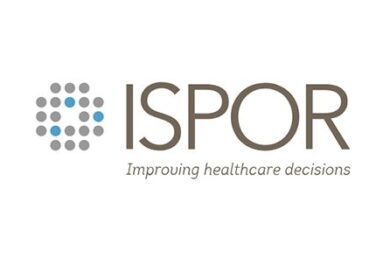
ISPOR EU
November 17 - 20, 2024
Barcelona, ES
Trinity Life Sciences proudly sponsors ISPOR EU 2024, the leading global conference for Health Economics and Outcomes Research, on November 17 – 20 in Barcelona, Spain. We look forward to presenting a variety of posters that address healthcare policies. Stay tuned for a full list of topics and the poster schedule. Be sure to stop by booth #1221 to speak with our HEOR experts.

Monica Martin de Bustamante
Senior Partner &
Head of Advisory

Bami Oshinowo
Partner, Value, Access & Pricing
& London Office Lead

Nandini Hadker
Partner,
Evidence Strategy

Matt O’Hara
Partner,
Evidence Strategy
ISPOR EU 2024 Presentation Schedule
Email: info@trinitylifesciences.com to discuss one of our presentations listed below.
RWD8
Maximizing the Value of Real-World Data in HEOR – a Comparative Assessment of Claims and Emr Sources in Europe
Monday, 18 November 2024
Poster Session Time: 10:30 AM – 1:30 PM
Discussion Period: 12:30 – 1:30 PM
Authors: Diehl M, Saikumar S, Furrer DE, Kulkarni A, Patel N, Hadker N
Abstract:
OBJECTIVES: Heterogeneity in the European RWD landscape, both regionally and across vendors, requires fit-for-purpose dataset selection in HEOR studies. Visibility into RWD elements is crucial for appropriate selection for region-specific, care setting specific use-cases. This research outlines the available data sources and evaluates their advantages and limitations.
METHODS: A framework was developed around European EMR and payer claims data to characterize each dataset’s ability to address research questions, including epidemiology and HCRU across Europe. A representative sample of third-party data vendors (e.g., TriNetX, IQVIA, Cegedim) was systematically compared with national payer databases, identifying country-specific nuances and dataset considerations specific to HEOR use-cases.
RESULTS: Payer-based claims datasets displayed higher utility in HEOR study design due to larger sample sizes, range of capture across care settings, and ability to track patients longitudinally relative to EMR datasets. Most European claims data (e.g., in Germany and France, and to a lesser extent in Italy) are sourced directly from public payer databases, with major limitations being publication requirements and extensive timelines to data access. EMR data, while providing higher clinical specificity, was limited by lack of consistent tokenization, capture across geographies, and care settings. Cegedim EMR, for example, covers 4.5M patients in France across 2,000 GPs, while covering only 9k patients in Italy across 550 GPs. IQVIA EMR data covers a comparable volume of patients in France (i.e., 4.7M), but is sourced more substantially from specialists (2.8M patients) compared to GPs (1.9M patients).
CONCLUSIONS: Myriad RWD is available for HEOR studies in Europe. Where substantial clinical or patient cohort specificity is required (e.g., TA-specific burden of illness), EMR data vendors with varying geographical and care setting coverage can meet this demand. For many other use-cases (e.g., epidemiology, HCRU quantification), payer claims data is preferred due to its capacity for longitudinal capture and breadth of coverage.
EPH98
Disease Burden of Respiratory Syncytial Virus in the US and Germany: A Comparative Analysis of Real-World Data Availability and Opportunities
Monday, 18 November 2024
Poster Session Time: 4:00 – 7:00 PM
Discussion Period: 6:00 – 7:00 PM
Authors: Diehl M , Somani P , Witte J , Kulkarni A , Saikumar S , Patel N , Braegelmann K , Flume M
Abstract:
OBJECTIVES: Retrospective analyses of medical claims data serve as a cornerstone in HEOR, supporting clinical and economic studies around disease burden. This study compared how different datasets in two unique healthcare systems (i.e., USA and Germany) quantified disease burden using claims data, highlighting nuances associated with the data collected and how these enable characterization of unmet need. Additionally, the study identified implications for life science companies interested in leveraging claims analyses in these markets to support strategic decision making.
METHODS: A case study-based approach was leveraged to quantify disease burden (e.g., incidence, hospital visits, length of stay, re-admission), in pediatric patients with RSV using claims data in the US (Komodo® open and closed claims) and in Germany (DAK-insurance data). A comprehensive comparison of the study methodology involved in each country was performed, including associated benefits and limitations.
RESULTS: Both DAK and Komodo provide a holistic view of HCRU related disease burden. RSV incidence rates were estimated to be 46 per 1000 in patients under age 1 in 2021/22 in the US, versus 47.7 in Germany. In Germany, 55.7% of RSV patients under age 1 were hospitalized; distinction between inpatient or ER discharge was not captured. In comparison, 39% of patients were hospitalized in the US, with specificity across inpatient and ER settings. German data offers visibility into ventilation and treatments for inpatient cases, but in the US, this insight is only available when other data (e.g., chargemaster) is linked to claims.
CONCLUSIONS: Both datasets can support robust publication-grade HCRU studies. US claims data provides additional clinical specificity but only when linked with other sources with complex analytical requirements. Germany offers rich data linked across several setting of care, to inform HCRU use cases for more holistic decision-making. Data sources in each market have unique limitations that must be considered through robust analysis design.
MSR103
Attitudes and Perceptions on Environmental Sustainability Efforts in the Life Sciences Industry: A Cross-Sectional Survey from HEOR and Industry Professionals
Tuesday, 19 November 2024
Authors: Goldman E, Hamilton L, Dehipawala S, Silber A, O’Hara M
Abstract:
OBJECTIVES: Climate resilience and environmental sustainability are increasingly important topics in the health economics outcomes research (HEOR) field, with companies investing in reducing their environmental impact. We conducted a survey aimed to identify perceptions across the life sciences industry regarding their organizations’ efforts to tackle sustainability, particularly within HEOR, evidence generation, and value communication strategy.
METHODS: The survey was distributed online and through in-person outreach efforts, targeting those in the pharmaceutical or MedTech field. Questions included region of focus, role, level of interaction with environmental sustainability topics in the context of business, perceptions on how organizations are incorporating these topics into their evidence generation strategy, challenges, etc. Survey results were collected between May and June 2024.
RESULTS: A total of 20 respondents completed the survey. 45% of respondents reported that their work has a Europe or global focus, with 45% of respondents working in the HEOR or market access field. Responses ranged widely regarding agreement that their organization is adequately incorporating environmental sustainability data into their evidence generation strategy, with most (32%) reporting “neutral”, ~26% reporting “somewhat disagree” and ~16% reporting “somewhat agree”. Respondents stated that incorporation of environmental sustainability into their organizations’ HEOR strategy was important and needed for product value communication among stakeholders, including pricing determinations/negotiations (58%) and Health Technology Assessment (HTA) (53%) as well as interactions with health systems (79%) and payers (68%). Regarding foreseeable challenges, respondents noted awareness and acceptance on the relevancy of environmental sustainability as a key piece of the HEOR framework.
CONCLUSIONS: These findings show that while life sciences stakeholders are interested in environmental sustainability, many believe that organizations are not adequately incorporating climate resilience into their evidence generation strategy. Those working in the HEOR space should progress discussions on how existing HEOR methodologies and access strategies can be applied to quantifying the sustainability impact of assets.
HTA401
Implications of the European Joint Clinical Assessment on Pharmaceutical and Medical Technology Company Market Access and Evidence Generation Strategy
Wednesday, 20 November 2024
Authors: Sonia Acosta, Conor Maher, Matt O’Hara, Abby Silber
Abstract:
OBJECTIVES: The European Joint Clinical Assessment (JCA), a centralized framework to aid HTAs across European countries, will be introduced in January 2025. Oncology and advanced therapy products will be the first to be evaluated through the JCA, which will expand to cover all medicinal products by 2030. The introduction of the JCA poses significant uncertainty, making it crucial for Pharmaceutical and MedTech companies to prepare for potential impacts on their manufacturing planning from an evidence-generation and value-demonstration perspective.
This study aims to provide insight into how industry experts are preparing for JCA, the impact it has had, and the impact it will have on their planning ahead of launch.
METHODS: This study utilized secondary research to understand how Pharmaceutical and MedTech companies prepare for the JCA rollout. It investigated these topics through a quantitative survey of industry experts across HEOR, access, and commercial functions.
RESULTS: Based on an interim analysis of secondary research, it is expected that upon initial adoption, JCA will lead to duplication of value communication materials, evidence generation, and extension of evaluation timelines, delaying the time required to give access to potentially lifesaving medications. Additionally, there are uncertainties around how national, regional, and local HTA authorities will adopt and rely on the outcomes from the JCA.
Misalignments in the importance of the different elements of the population, intervention, comparison, and outcomes (PICO) framework across markets were also identified as a barrier to integrating the JCA outcomes with country-level decision-making.
CONCLUSIONS: Increased internal cross-functional collaboration will ensure the evidence generated meets JCA and national, regional, and local HTA requirements across Pharma and MedTech companies. Collaboration across the regional and local HEOR and market access teams will be critical to the success of launches and to ensuring familiarity across teams with processes and requirements across evaluation authorities.
HTA109
European Joint Clinical Assessment: How Many PICOs Are Too Many?
Monday, 18 November 2024
Authors: Ismail Ismailoglu
Abstract:
OBJECTIVES: Beginning in 2025, oncology medicines submitted for European regulatory approval will also be subject to European Joint Clinical Assessment (JCA) process. The scope for the JCA will be developed based on Member State requests for inclusion of data relating to specific patient groups (P), interventions (I), controls (C), and outcomes (O). In this study, we aimed to simulate a hypothetical JCA scoping process in the relapsed / refractory multiple myeloma (RRMM) space to understand potential number of PICOs that might be requested and identify avenues for limiting the overall number within the final scope.
METHODS: Available RRMM treatment and reimbursement guidelines were assessed in Member States to identify key patient population and comparator dynamics for a hypothetical intervention for patients with 2 or more lines of prior therapy. Potential PICOs that can be requested by each Member State were assessed. PICOs were then consolidated based on previously provided examples to identify minimum number of PICOs in the final scope.
RESULTS: Our research identified definition of a relevant patient population and comparator selection to be the most impactful drivers of the size of the PICO universe. The number of potential populations were strongly driven by the diversity of treatments available in 1L and 2L settings across Member States. Similarly, comparator component also demonstrated significant variation according to reimbursement outcomes within each country.
CONCLUSIONS: While allowing all Member States request clinical data necessary for assessment of therapies within their treatment landscapes, JCA process should also consider practicality of performing such assessments in complex landscapes, such as MM. Close collaboration with medical community to identify patient populations or comparators that might be considered “equivalent” can be leveraged as a tool to streamline assessment scope, lowering process burden both for assessors and technology developers.
HTA364
The JCA Is Coming: Evolving Perspectives From EU Stakeholders
Wednesday, 20 November 2024
Authors: Jessica Counihan, Alexis Bryan, Katharine Wu, Ismail Ismailoglu
Abstract:
OBJECTIVES: The Joint Clinical Assessment (JCA) will become mandatory in Europe next January. Previous research has aimed to evaluate the potential impact of widespread European adoption of the JCA as a new requirement for Health Technology Assessments. As the official implementation approaches, further research is required to understand the state of implementation and current/evolving stakeholder perceptions.
METHODS: This study presents the results of primary research from N=8 ex-payer stakeholders across Germany, France, Italy, and Spain to provide current perceptions of the JCA and potential future impact of widespread European adoption. We also utilize retrospective interview results to show how payers’ perceptions/knowledge of JCA implementation evolved over the past year.
RESULTS: Retrospective research found that most payers have high confidence in the parameters and evaluation criteria within the JCA. However, countries were still planning to conduct their own supplemental clinical assessments, which creates redundancies. Italian and Spanish payers were working to implement a cost-effectiveness evaluation upon JCA implementation, but the level of integration remains unclear. German payers reported seamless integration of the JCA into their current system given alignment of local priorities with the JCA parameters, whereas French payers experienced some adoption inertia as they were still thinking through how best to integrate the JCA into their own evaluation processes.
Despite the confidence in the parameters and evaluation criteria within the JCA, many hurdles and uncertainties regarding implementation remain. This study will provide updated insights into the implementation and impact of the JCA plus fill any gaps from last year’s research.
CONCLUSIONS: Overall, this research suggests that while the JCA has been well-received by payers across Europe, there is still work to be done to ensure efficient implementation. The study highlights the need for continued research into the state of implementation and evolution of stakeholder perceptions of the JCA.
HTA88
The Value of Oncology-Related Endpoints Beyond Overall Survival in HTA Decision-Making
Monday, 18 November 2024
Authors: Anna Alonso, Hannah Squires, Ismail Ismailoglu, Wenting Zhang, Max Hunt
Abstract:
OBJECTIVES: This research aims to understand the payer perception and impact of oncology-related endpoints beyond overall survival (OS) in health technology assessment (HTA) submissions and payer decision-making.
METHODS: Quantitative research was conducted using a web-enabled, 15-minute questionnaire to collect payer insights on the evolving use of non-OS endpoints in oncology drug assessments in France, Germany, Italy, Spain, and the UK from a total of 20 stakeholders. Survey questions evaluated key drivers for payer acceptance of non-OS endpoints, including type of endpoints of interest and circumstances under which they may be accepted.
RESULTS: OS is generally seen as the most patient-relevant and clinically robust endpoint in oncology drug assessments. However, OS data collection is not always feasible as it requires larger and longer trials, delaying access to innovative medicines, and it may not capture the broader priorities of healthcare professionals (HCPs) and patients. Nonetheless, acceptance of non-OS endpoints in oncology trials remains limited among EU payers, and there is a lack of consensus on their value and accuracy to capture clinical benefits. There is a general preference for time-to-event endpoints such as progression-free survival (PFS) and disease-free survival (DFS) among payers, followed by patient-reported outcomes (PRO) and quality of life (QoL) as these endpoints measure additional morbidity benefits. Response rates, particularly biomarker-driven endpoints, are seen as the least meaningful as these are not considered sufficiently robust. There is opportunity to increase payer acceptance of non-OS endpoints by establishing guidance on their use, with initiatives such as the ongoing collaboration between NICE, SMC and CADTH to standardize the use of surrogate endpoints in cost-effectiveness analyses.
CONCLUSIONS: While OS is still considered the ‘gold standard’ endpoint in oncology trials, prioritizing alternative high-impact endpoints in the trial protocol with sufficient statistical power could demonstrate clinical benefits and expedite patient access to novel oncology therapies.
CO200
High Rate of Interhospital Transfers in Status Epilepticus: Challenges in Management of Care
Wednesday, 20 November 2024
Poster Session Time: 9:00 – 11:30 AM
Discussion Period: 9:00 – 10:00 AM
Authors: Saikumar S
Abstract:
OBJECTIVES: Status epilepticus (SE) is a neurologic emergency requiring urgent diagnosis and treatment to prevent neurologic sequelae. SE may present as a complication of an underlying illness, exacerbation of baseline epilepsy disorder, or without known underlying etiology in both the community or academic medical center setting. This study examined care settings and inter-hospital transfer characteristics in the management of SE.
METHODS: Hospital-based, service-level, all-payer US data from PINC AI™ Healthcare Database (2018-22) and payer-complete patient-level claims from Komodo Healthcare Map linked with Komodo Hospital Insights (KHI) (2017-22) were analyzed. SE episodes were identified by ICD-10 CM code and segmented according to IV anesthesia (IVA) and mechanical ventilation exposure into established SE (ESE) and refractory SE without or with IVA (RSE-noIVA, RSE-IVA). Super-refractory SE (SRSE) was a subset of RSE-IVA episodes (IVA and mechanical ventilation for ≥2 days).
RESULTS: 140,538 SE episodes in 113,229 unique patients were analyzed within PINC AI™; 48,483 (34%) episodes involved ≥1 inter-hospital transfer; 13,839 (10%) offered treatment visibility up to first transfer. Most (83%) patients were transferred after 1st- or 2nd-line treatment. 203,176 episodes in 146,408 unique patients were analyzed in Komodo Claims; 65,545 (32%) episodes required ≥1 transfer. Initial admissions among episodes requiring a transfer were evenly split between community (51%) and academic (49%) settings, however the majority (66%) were discharged from an academic facility. Analysis of 3,566 linked claims + KHI episodes involving transfers demonstrated that transfer rates increased with higher treatment intensity: 30% (614/2025) of patients with ESE episodes transferred during the episode versus 36% (719/2008) of RSE-noIVA, 43% (955/2227) of RSE-IVA, and 48% (578/1199) of SRSE episodes.
CONCLUSIONS: Increased treatment intensity was associated with increased need for inter-hospital transfers. A high proportion of admissions at community facilities were transferred to academic institutions, highlighting a need for coordinated efforts to provide optimal care.
HTA51
Health Equity and HTA: The HTA Agencies Are Asking for Equity Data, But Are They Using It?
Monday, 18 November 2024
Authors: Mary Fletcher-Louis, Andreia Ribeiro, Manon Ricard, Isabel Gutierrez-Colomer
Abstract:
OBJECTIVES: The overarching purpose of health technology assessment (HTA) agencies globally is to make evidence-based evaluations of the value added by new health interventions. Increasingly, HTA agencies ask manufacturers to include reference to health equity in their submissions. This study aims to understand how frequently HTA agencies (in Europe, Canada and Australia) ask manufacturers to provide evidence relating to health equity, and how frequently they refer to that evidence in their assessment reports.
METHODS: A systematic comparison of HTA agency guidance (including submission templates) and assessment reports was undertaken. Specific evaluation was performed to assess the equity-related elements of value that are referenced in HTA guidance documents and reports relating to 5 pharmaceuticals assessed between January 2022 and June 2024. We considered elements of value in two broad categories; therapy area-related value (e.g. investment in indications that disproportionately impact vulnerable or underserved populations) and intervention-related value (including clinical trial diversity, patient support initiatives, and intrinsic features of the intervention that may impact equitable access).
CONCLUSIONS: Our analysis found that several HTA agencies refer to health equity in their guidance. In certain assessments they call out equity considerations as value detractors, value drivers or calls to action. The frequency with which equity is referenced within assessment reports varies between countries; CADTH is a leading agency in terms of the frequency with which health equity is explicitly included in the decision-makers’ deliberations. Going forward, it will be key for HTA agencies to go beyond asking for health equity-related evidence, and demonstrate how they are using that evidence in their deliberations.
HTA78
HTA Key Drivers for Oral Oncology Products: Comparison between Brazil and European Countries
Monday, 18 November 2024
Poster Session Time: 10:30 AM – 1:30 PM
Discussion Period: 12:30 – 1:30 PM
Authors: Valeria Boers, Miguel Martin de Bustamante, Dulce Montoya, Susana Scott, Marcela Vega
Abstract:
OBJECTIVES: This research aims to identify and compare the key drivers influencing HTA outcomes for oral oncology products across Latin America and Europe. Its goal is to help elucidate how HTA drivers may vary between countries to understand the impact of HTA outcomes on market access.
METHODS: The study involved a comprehensive qualitative analysis to identify differences across key drivers from HTA bodies for twelve oral oncology products and thirteen indications across the UK, DEU, FRA, ESP, and BRA. Due to data limitations in BRA, therapies were selected based on the availability of an HTA assessment by BRA’s HTA body (ANS) between 2022 and 2023. All data were collected from publicly available HTA assessments.
RESULTS: Positive recommendations were issued by HTA bodies in the following percentage of cases: ESP (80%), BRA (69%), UK (45%), DEU (36%), and FRA (25%). Efficacy improvement was a shared driver across markets, but key differences existed. DEU required statistically significant overall survival (OS) improvements, while FRA, UK, ESP, and BRA accepted surrogate endpoints like progression-free survival (PFS) and major cytogenetic response (MCR). FRA and ESP were the countries that focused the most on hazard ratios (HR); values < 0.75 were generally considered acceptable. Cost-effectiveness was crucial in BRA and the UK. Quality of submitted evidence was a key driver in BRA, FRA, and DEU. Improving patient quality of life (QoL) was more important in the UK and DEU compared to other markets. Clinical evidence with an appropriate comparator was essential in DEU; other markets accepted indirect comparisons and placebo.
CONCLUSIONS: Understanding key drivers behind HTA decisions is crucial for understanding pricing, access, and reimbursement differences. By tailoring submissions to align with the specific criteria and expectations of each HTA body, pharmaceutical companies can enhance the likelihood of favorable outcomes, leading to more timely and equitable patient access to therapies.
PCR267
Disease Burden and Treatment Satisfaction Among Patients With Chronic Inflammatory Demyelinating Polyneuropathy (CIDP): A Quantitative Patient Survey
Wednesday, 20 November 2024
Poster Session Time: 9:00 – 11:30 AM
Discussion Period: 9:00 – 10:00 AM
Authors: Matt O’Hara, Mary Mulrooney, Dan Shaffer
Abstract:
OBJECTIVES: Chronic inflammatory demyelinating polyneuropathy (CIDP) is a rare, immune-mediated neurological disorder. Despite available treatments (e.g., intravenous immunoglobulin [IVIG]), CIDP can present a substantial burden for patients. The objectives of this study were to capture patients’ experience and satisfaction with currently available standard of care CIDP treatments (e.g., IG therapy, steroids, immunosuppressants, or rituximab), and the impact of CIDP on quality of life (QoL).
METHODS: This was a cross sectional, observational study in adult patients diagnosed with CIDP in the United States. A web-enabled survey was used to quantitatively collect information on self-reported CIDP treatment experience and satisfaction across treatment attributes (e.g., efficacy, dosing frequency, route of administration [RoA]) and QoL.
RESULTS: In total, 71 patients completed the quantitative survey (average age, 52 years; 79% female). Most patients (n=53, 75%) were currently receiving IVIG, then subcutaneous IG (n=17, 24%). Overall, n=38 (54%) of the patients surveyed reported a lack of response to prior therapy or residual disability despite prior treatments. Less than half of patients rated high satisfaction (≥6 points on 1-7 scale) with any attribute of their current CIDP treatment; the least satisfaction was for RoA and dosing frequency. Two-thirds of patients surveyed (n=48, 68%) reported that CIDP had a strong to significant impact on their QoL (≥6 points). Across activities of daily living, ambulation was the most affected by CIDP (n=57, 80% indicated at least some impact; ≥3 points), followed by personal hygiene (n=46, 65%), dressing (n=41, 58%), continence (n=33, 46%), toileting (n=31, 44%), and feeding (n=27, 38%).
CONCLUSIONS: Findings from this study underscore the considerable unmet needs and burden of CIDP, including moderate to low satisfaction with current treatments, and the strong negative effect on QoL. Additional research is needed to understand how future therapies can alleviate the disease and management burden of CIDP.
